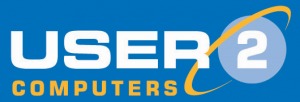Researchers from the John Hopkins University working with Dr Brett Kagan (chief scientist at Cortical Labs in Melbourne) have reported that brain ‘organoid’ biocomputing devices could be the next ‘big thing’ in computing.
What Is A Brain Organoid?
Computers powered by brain cells could use ‘brain organoids’, which are (pen) dot-sized clusters of cell cultures made from stem cells, grown in a dish in the lab, containing neurons that can perform brain like functions and form a multitude of connections.
Example
In October last year, the same Dr Brett Kagan of Cortical Labs (and his team) reported having developed a lab-grown a ‘DishBrain’ system, made up of human or rodent neural networks (brain cells), hooked up to a computer using electrodes. Dr Kagan’s team used the electrodes and a recording to embed the mini lab-grown brain “in a simulated game-world” which was designed to mimic the arcade game ‘Pong.’ The team reported that the DishBrain took only 5 minutes to learn to play the Pong video game, with a success rate that appeared to be greater than could be expected from random chance. During the game, the mini lab-grown brain produced its own electrical activity and generally expended less energy as the game progressed. The mini-brain displayed “synthetic biological intelligence” by showing that it could self-organise activity in a goal-directed way in response to sparse sensory information about the consequences of its actions, i.e. it was able to learn without being taught.
Organoid intelligence – The Future Of Computers?
In a new paper, published in the journal ‘Frontiers In Science’ under the title “Organoid intelligence (OI): the new frontier in biocomputing and intelligence-in-a-dish”, Dr Kagan and his research team have outlined their vision of computers of the future. In the paper, the researchers suggest that biological computing/biocomputing could harness brain organoids into a type of biological hardware which could be faster, more efficient, and more powerful than silicon-based computing and AI, and only require a fraction of the energy. The team say in the research paper: “We anticipate OI-based biocomputing systems to allow faster decision-making, continuous learning during tasks, and greater energy and data efficiency.”
Current Computers Face Limitations
Thomas Hartung, a professor of environmental health sciences at the Johns Hopkins Bloomberg School of Public Health and Whiting School of Engineering has highlighted how biological computing may be better than current silicon-based computing because it could:
– Dramatically reduce the energy-consumption demands of supercomputing that are becoming increasingly unsustainable. For example, although the Kentucky-based Frontier computer has just exceeded the computational capacity of a single human brain cell, it used a million times more energy.
– Real brains are better at making complex logical decisions.
– Real brains have an incredible capacity for storing information (an estimated 2,500 terabytes), and “We’re reaching the physical limits of silicon computers because we cannot pack more transistors into a tiny chip.”
What Does This Mean For Your Business?
As the research team admit, it’s likely to be decades before organoid biocomputers are comparable to any type of contemporary computer, but the team feel it’s important to begin the research now. It is envisioned by the research team that OI biocomputers could be used in drug testing research for neurodevelopmental disorders and neurodegeneration such as autism, and as “complex, networked interfaces whereby brain organoids are connected with real-world sensors and output devices, and ultimately with each other and with sensory organ organoids (e.g. retinal organoids), and are trained using biofeedback, big-data warehousing, and machine learning methods”. Also, if there was scaled up production of brain organoids and they could be trained with AI, biocomputers could support superior computing speed, processing power, data efficiency, and storage capabilities, and could benefit many more industries, meet many more human needs, and help tackle our most pressing and complex challenges, e.g. climate change.




